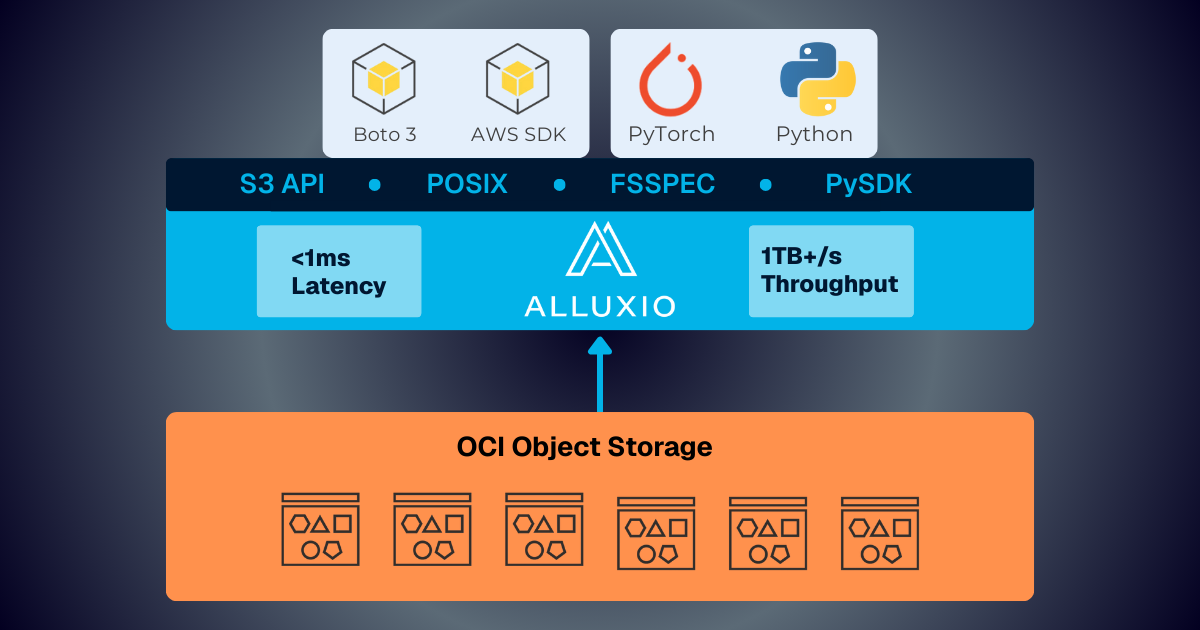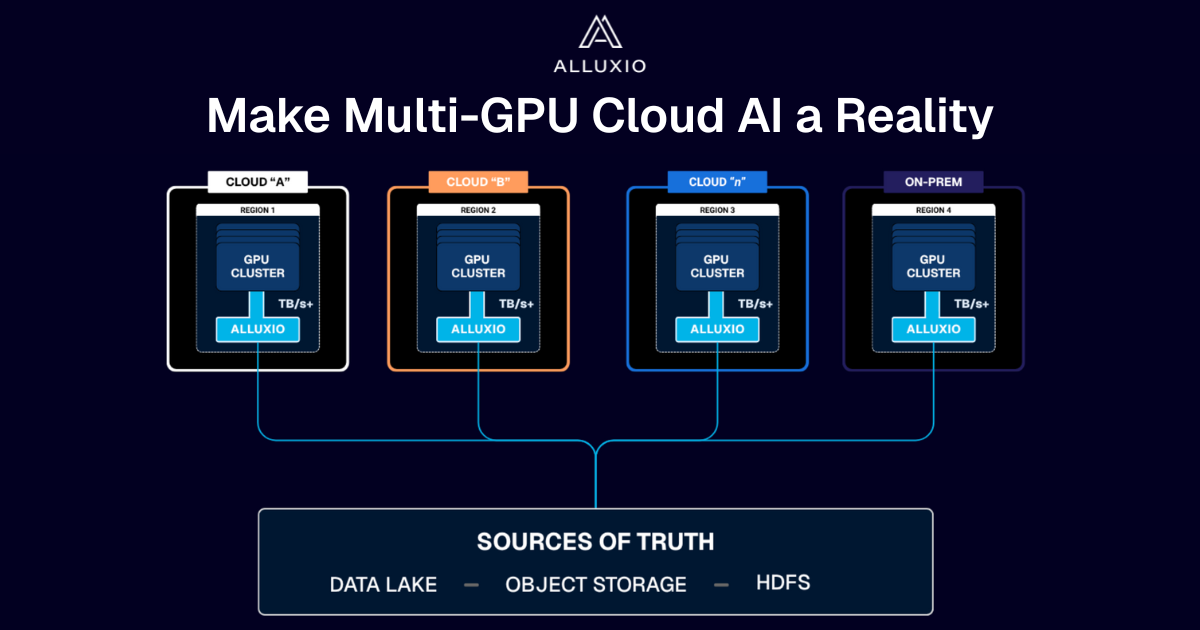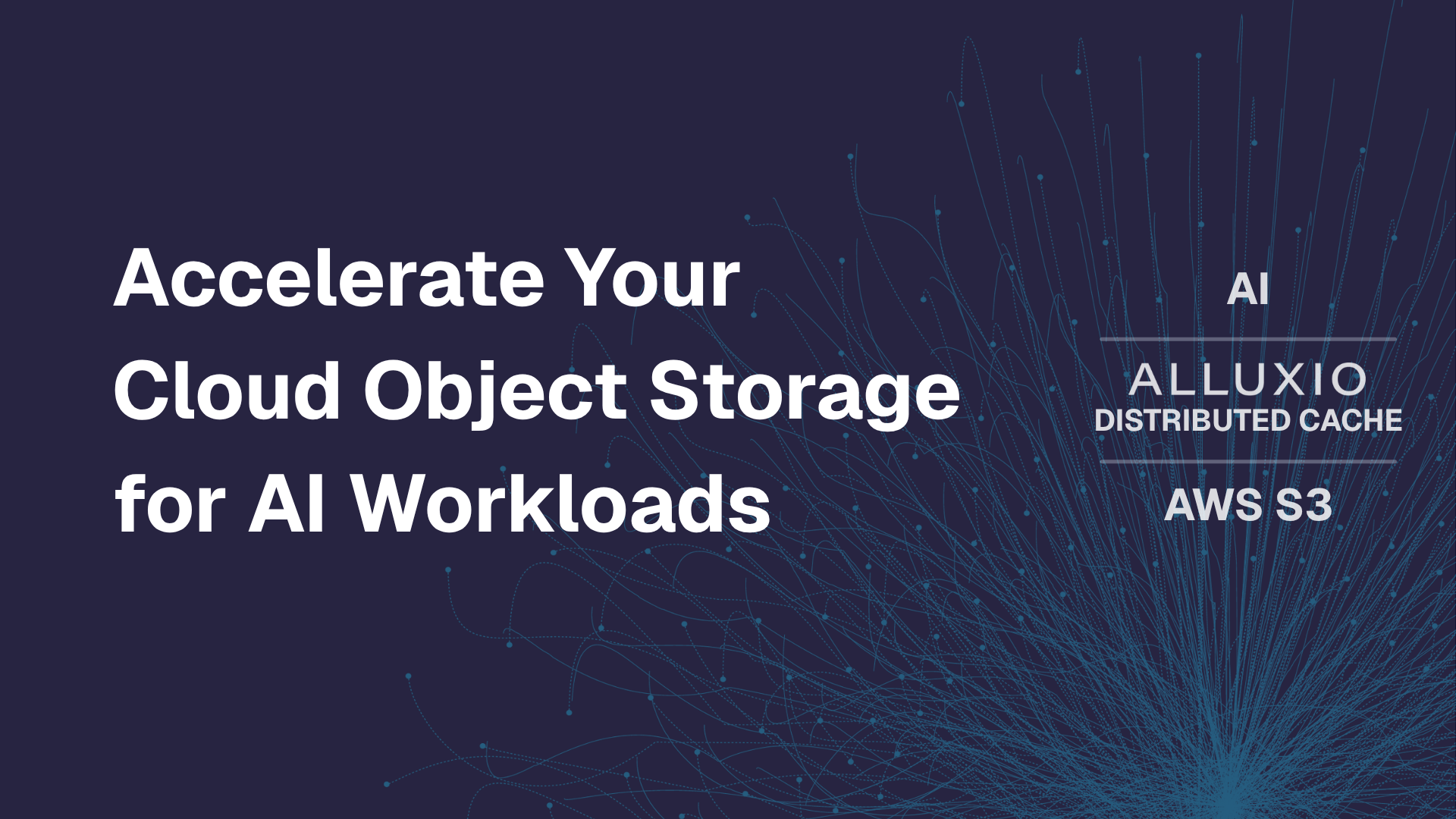Products
Blog

Alluxio and Oracle Cloud Infrastructure: Delivering Sub-Millisecond Latency for AI Workloads
Oracle Cloud Infrastructure has published a technical solution blog demonstrating how Alluxio on Oracle Cloud Infrastructure (OCI) delivers exceptional performance for AI and machine learning workloads, achieving sub-millisecond average latency, near-linear scalability, and over 90% GPU utilization across 350 accelerators.

Make Multi-GPU Cloud AI a Reality
If you’re building large-scale AI, you’re already multi-cloud by choice (to avoid lock-in) or by necessity (to access scarce GPU capacity). Teams frequently chase capacity bursts, “we need 1,000 GPUs for eight weeks,” across whichever regions or providers can deliver. What slows you down isn’t GPUs, it’s data. Simply accessing the data needed to train, deploy, and serve AI models at the speed and scale required – wherever AI workloads and GPUs are deployed – is in fact not simple at all. In this article, learn how Alluxio brings Simplicity, Speed, and Scale to Multi-GPU Cloud deployments.
.png)
Thank you! Your submission has been received!
Oops! Something went wrong while submitting the form.
.jpeg)
Implementing a Secure Plug-and-play Distributed File System Service Using Alluxio in Baidu
In this article, you will learn how to incorporate Alluxio to implement a unified distributed file system service as well as how to add extensions on top of Alluxio including customized authentication schemes and UDF (user-defined functions) on Alluxio files.
No items found.
.jpeg)
Four Different Ways to Write to Alluxio
Alluxio is a new layer on top of under storage systems that can not only improve raw I/O performance but also enables applications flexible options to read, write and manage files. This article focuses on describing different ways to write files to Alluxio, realizing the tradeoffs in performance, consistency, and also the level of fault tolerance compared to HDFS.
No items found.

Creating Grafana Dashboards to Visualize Alluxio Metrics
Monitoring metrics is highly important to operate distributed systems in production. Alluxio collects metrics using the Codahale Metrics Library on I/O throughput, RPC throughput, and resource usage. Alluxio metrics are shown in its webUI, but are also available through a REST endpoint or exportable to several third-party sinks in a time-series manner (see docs).
No items found.
.jpeg)
Accelerating Write-intensive Data Workloads on AWS S3
Alluxio is an open-source data orchestration system widely used to speed up data-intensive workloads in the cloud. Alluxio v2.0 introduced Replicated Async Write to allow users to complete writes to Alluxio file system and return quickly with high application performance, while still providing users with peace of mind that data will be persisted to the chosen under storage like S3 in the background.
No items found.

Recap AWS Summit New York
Alluxio is a proud sponsor and exhibitor at the AWS Summit in New York. If you weren't able to attend, here are the highlights
Hybrid Multi-Cloud
Large Scale Analytics Acceleration
.jpeg)
The Practice of Alluxio in Ctrip Real-Time Computing Platform
Today, real-time computation platform is becoming increasingly important in many organizations. In this article, we will describe how ctrip.com applies Alluxio to accelerate the Spark SQL real-time jobs and maintain the jobs’ consistency during the downtime of our internal data lake (HDFS). In addition, we leverage Alluxio as a caching layer to dramatically reduce the workload pressure on our HDFS NameNode.
Large Scale Analytics Acceleration
.jpeg)
2.0 is here! Embrace silos orchestrate data accelerate innovation
Here in New York, at the AWS Summit, we are super excited to announce that Alluxio 2.0 is here, our most major release since the Alluxio launch. A couple months ago, we released 2.0 Preview - which included some of the capabilities, but 2.0 now includes even more, to continue building on to our data orchestration approach for the cloud.
No items found.
.jpeg)
Orchestrating Data for the Cloud World with Alluxio 2.0
Today, I’m thrilled to announce the GA of Alluxio 2.0.0, Alluxio’s biggest release to date (see our Release Notes & Release Blog) with over 900 commits.
No items found.
.jpeg)
Turn cloud storage or HDFS into your local file system for faster AI model training with TensorFlow
This article aims to provide a different approach to help connect and make distributed files systems like HDFS or cloud storage systems look like a local file system to data processing frameworks: the Alluxio POSIX API. To explain the approach better, we used the TensorFlow + Alluxio + AWS S3 stack as an example.
Large Scale Analytics Acceleration
Model Training Acceleration

Recap: Presto Summit SF 2019
Alluxio is a proud sponsor and exhibitor at the Presto Summit in San Francisco. If you missed the conference, don’t worry we’ve got you covered!
Hybrid Multi-Cloud
Large Scale Analytics Acceleration

Hybrid Environments for Data Analytics is a Possibility
As the data ecosystem becomes massively complex and more and more disaggregated, data analysts and end users have trouble adapting and working with hybrid environments. The proliferation of compute applications along with storage mediums leads to a hybrid model that we are just not accustomed to. With this disaggregated system data engineers now come across a multitude of problems that they must overcome in order to get meaningful insights.
Hybrid Multi-Cloud
Large Scale Analytics Acceleration
Your selections don't match any items.

